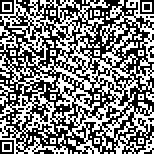| 摘要: |
| [摘要] 目的 分析腹壁子宫内膜异位症(AWE)的临床特点,为AWE的诊治提供参考。方法 收集2015年1月至2020年12月贵阳市妇幼保健院收治的47例AWE患者的临床资料及随访资料并分析其特点。结果 患者就诊的平均年龄为(32.17±4.45)岁,均有剖宫产手术史。剖宫产1次者32例(68.09%),2次者15例(31.91%)。腹部手术为横形切口43例(91.49%),纵形切口4例(8.51%)。患者初次发病距离上次剖宫产手术时间为2~120个月。37例(78.72%)以经期腹壁包块疼痛为首发症状。包块位置多见于剖宫产手术横切口左右两侧。47例AWE患者均行腹壁B超检查,其中42例(89.36%)提示腹壁切口处不规则的低回声肿块,边界不清,部分包块内可见血流信号。47例AWE患者中有29例行CA125检测,均值为(23.52±12.81)U/ml。47例患者均行手术切除病灶,病灶平均直径为(2.55±0.85)cm,病变多累及筋膜层和肌层。术后随访期间有6例患者复发。结论 剖宫产术后AWE有典型的临床表现,可结合病史和B超检查结果进行诊断。AWE首选手术治疗,术中彻底清除病灶是治疗的关键。临床医师在腹部手术中应防止医源性AWE的发生,术后可制定规范的管理模式并密切随访。 |
| 关键词: 腹壁子宫内膜异位症 剖宫产 临床特点 |
| DOI:10.3969/j.issn.1674-3806.2021.10.08 |
| 分类号:R 711.71 |
| 基金项目:国家自然科学基金项目(编号:81760266);贵州省科技计划项目(编号:黔科合基础[2020]1Y307) |
|
| Analysis of clinical characteristics of 47 cases of abdominal wall endometriosis |
|
MA Lan-fang, CAO Li-li, WU Zhang-ying, et al.
|
|
Department of Obstetrics and Gynecology, Guiyang Maternity and Child Health Care Hospital, Guizhou 550001, China
|
| Abstract: |
| [Abstract] Objective To analyze the clinical characteristics of abdominal wall endometriosis(AWE) and to provide reference for the diagnosis and treatment of AWE. Methods The clinical data and the follow-up data of 47 AWE patients admitted to Guiyang Maternity and Child Health Care Hospital from January 2015 to December 2020 were collected, and their characteristics were analysed. Results The average age of the patients was (32.17±4.45)years at the time of admission, and they all had a history of cesarean section. Among them, 32 cases(68.09%) received one cesarean section and 15 cases(31.91%) received two cesarean sections. There were 43 cases(91.49%) with abdominal transverse incision and 4 cases(8.51%) with abdominal longitudinal incision. The time from the patients′ first onset to the last cesarean section was 2-120 months. Thirty-seven cases(78.72%) had abdominal mass pain during menstruation as the first symptom. The location of the masses was more common on the left and right sides of the transverse incision in cesarean section. All the 47 patients with AWE underwent abdominal wall ultrasound examination, forty-two of whom(89.36%) showed irregular hypoechoic masses at the incision of the abdominal wall, with unclear borders, and blood flow signals in some masses. Among the 47 AWE patients, 29 cases underwent CA125 detection, with an average value of (23.52±12.81)U/ml. All the 47 patients underwent surgical resection of the lesions, and the average diameter of the lesions was (2.55±0.85)cm. Most of the lesions involved the fascia and muscle layers. Six patients relapsed during the postoperative follow-up. Conclusion AWE has typical clinical manifestations after cesarean section, which can be diagnosed in combination with medical history and B-ultrasound results. Surgical treatment is the first choice for AWE, and complete removal of the lesions during the operation is the key to the treatment of this disease. Clinicians should prevent the occurrence of iatrogenic AWE during abdominal surgery, and formulate a standardized management model and follow up the patients closely after surgery. |
| Key words: Abdominal wall endometriosis(AWE) Cesarean section Clinical characteristics |

